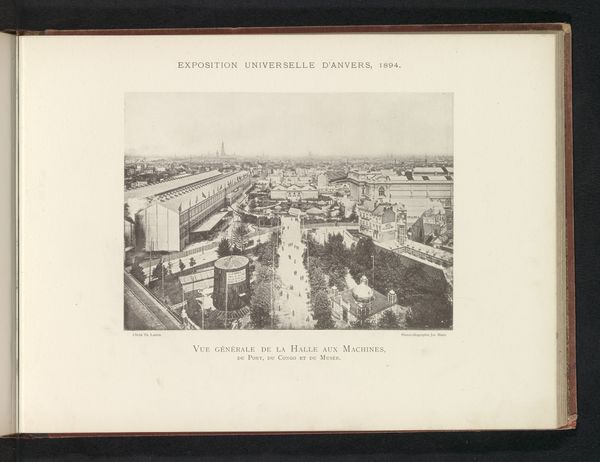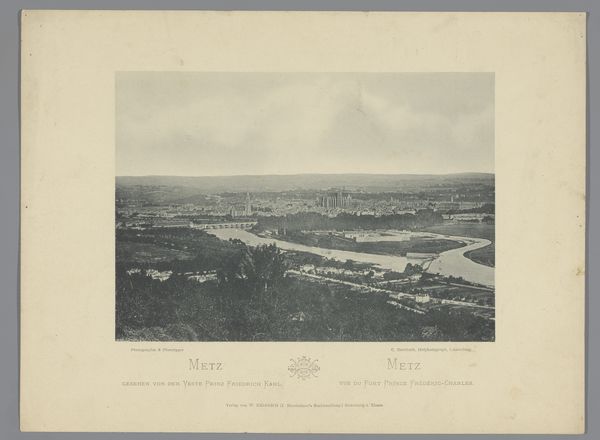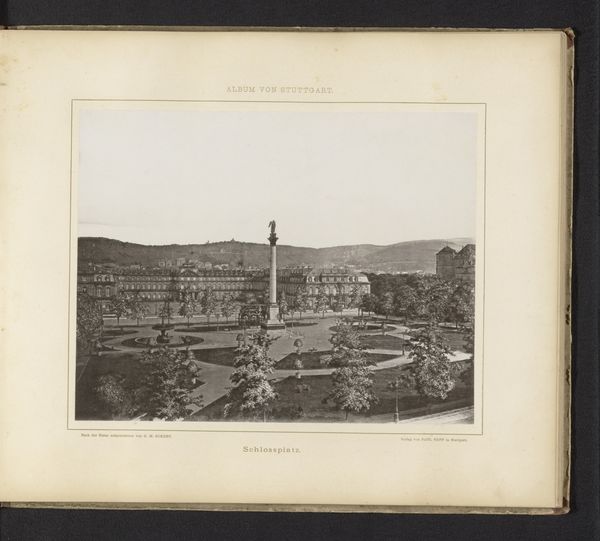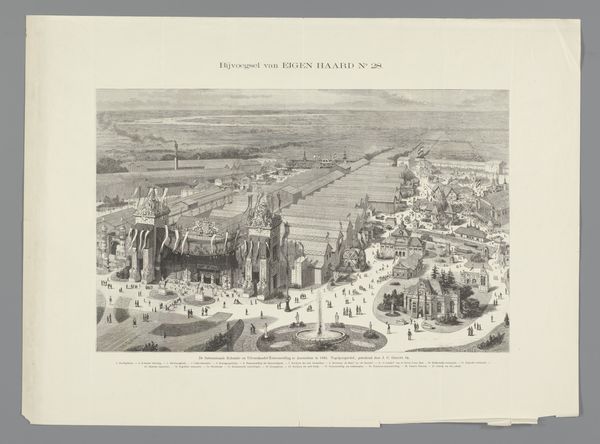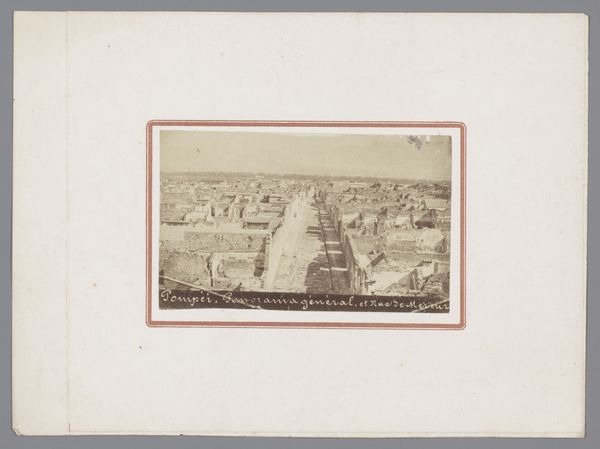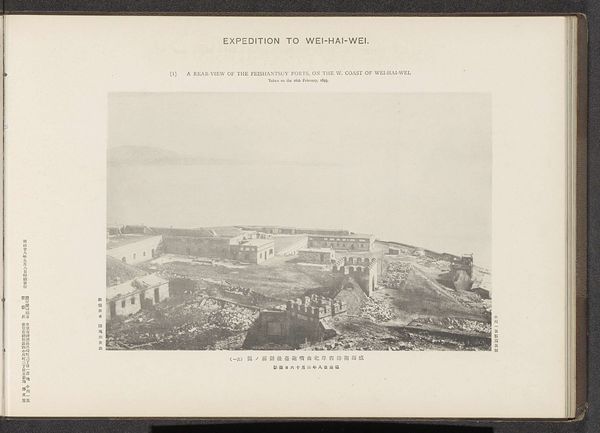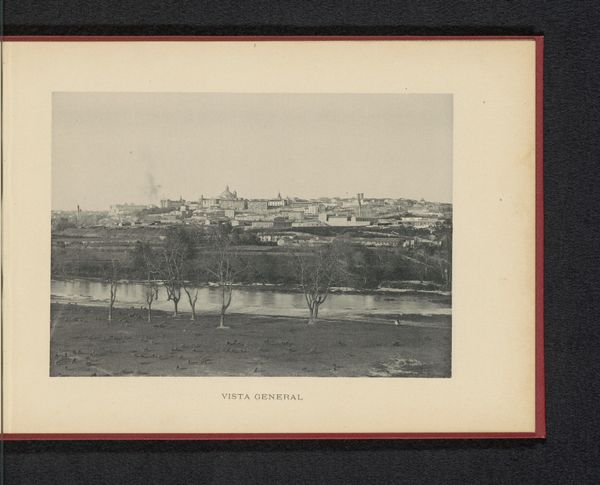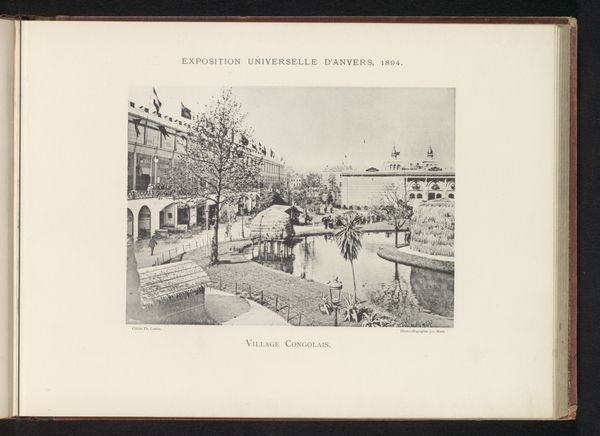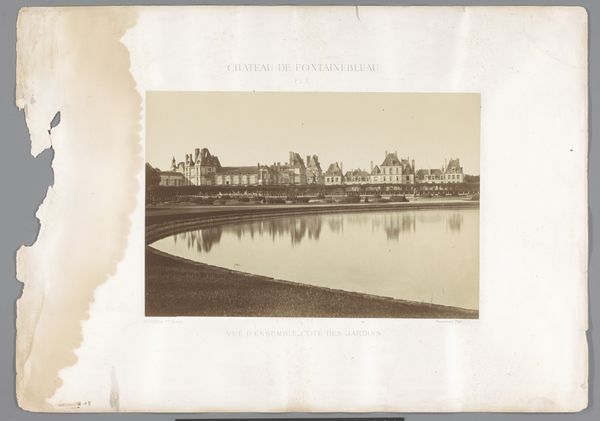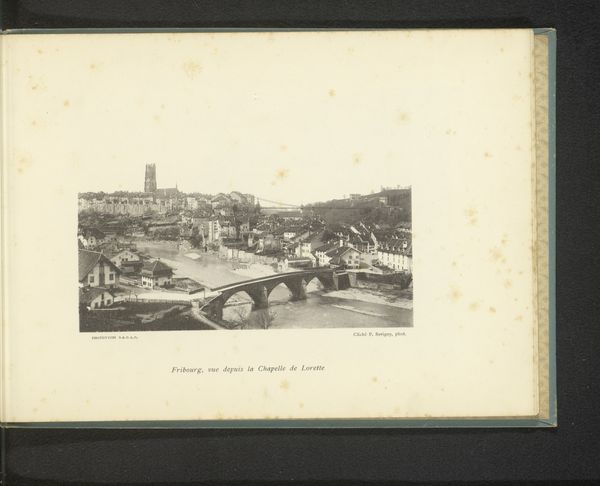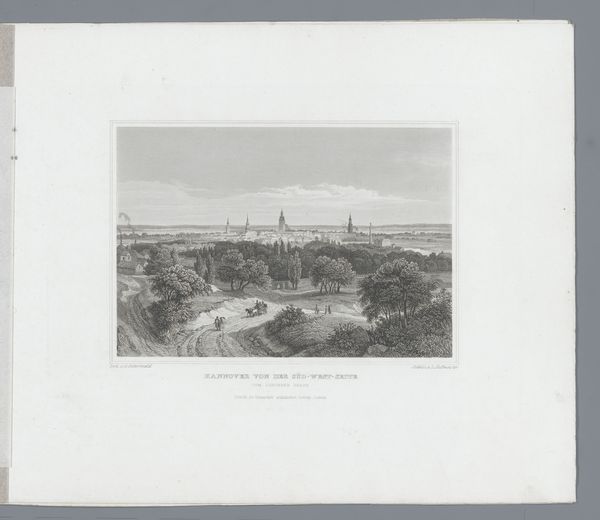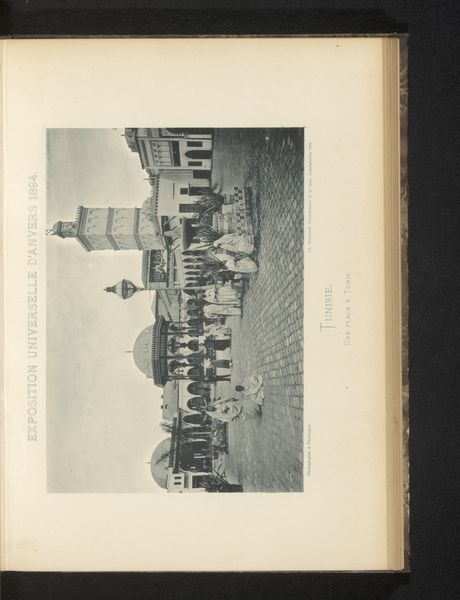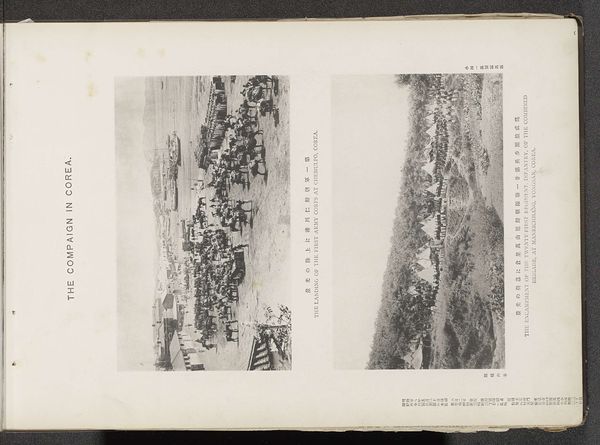
Dimensions: height 162 mm, width 218 mm
Copyright: Rijks Museum: Open Domain
Curator: This is a photograph titled "Gezicht op de wereldtentoonstelling te Antwerpen," or "View of the World's Fair in Antwerp," taken in 1894. Editor: It feels incredibly staged, almost artificial, despite supposedly capturing a real event. The perfect rows of trees, the pristine buildings...it lacks a certain authenticity. Curator: World's Fairs, or Universal Expositions as they were called then, were inherently exercises in staged national and colonial narratives. This image, attributed to Th. Lantin, showcases the meticulously planned architecture and landscaping. They served to promote industry, culture, and, of course, imperialism. Editor: Right, a carefully constructed facade of progress, masking underlying power structures. The wide avenue suggests accessibility, but who was really welcome here? The image feels complicit in that selective inclusivity. Curator: Precisely. The buildings themselves, while impressive, represent the aspirations of the era: grandeur, technological advancement, and a certain cultural dominance. You can imagine the exhibits showcasing innovations in machinery, art from various nations, and displays from colonial territories meant to highlight European superiority. Editor: The monochromatic palette lends a historical gravity, doesn’t it? It reinforces the idea of a distant, perhaps romanticized past. Yet, seeing it as a print, specifically a photographic print, brings the technology of image-making into the discussion too. The photograph itself becomes another tool of representation. Curator: And a very persuasive one. Photography lent a sense of realism to these curated spectacles. It allowed the illusion of direct access to a constructed reality. Its role in shaping public opinion regarding these expositions was quite substantial. The architecture mimics the temporality of dreams and goals; these dreams were mostly dreams of Colonial Europe. Editor: So, while it's visually intriguing as a cityscape, it’s important to unpack the layers of political and social messaging embedded within. It asks us to question whose vision of the "world" was actually being presented. Curator: It's a reminder that photography, like any artistic medium, is never truly objective. It carries the weight of the photographer's perspective, the context of its creation, and the intentions of those who commissioned it. Editor: Agreed. Examining it through that critical lens unveils the subtle yet potent ways that images like these shaped and continue to shape our understanding of history and the power dynamics that define it.
Comments
No comments
Be the first to comment and join the conversation on the ultimate creative platform.
